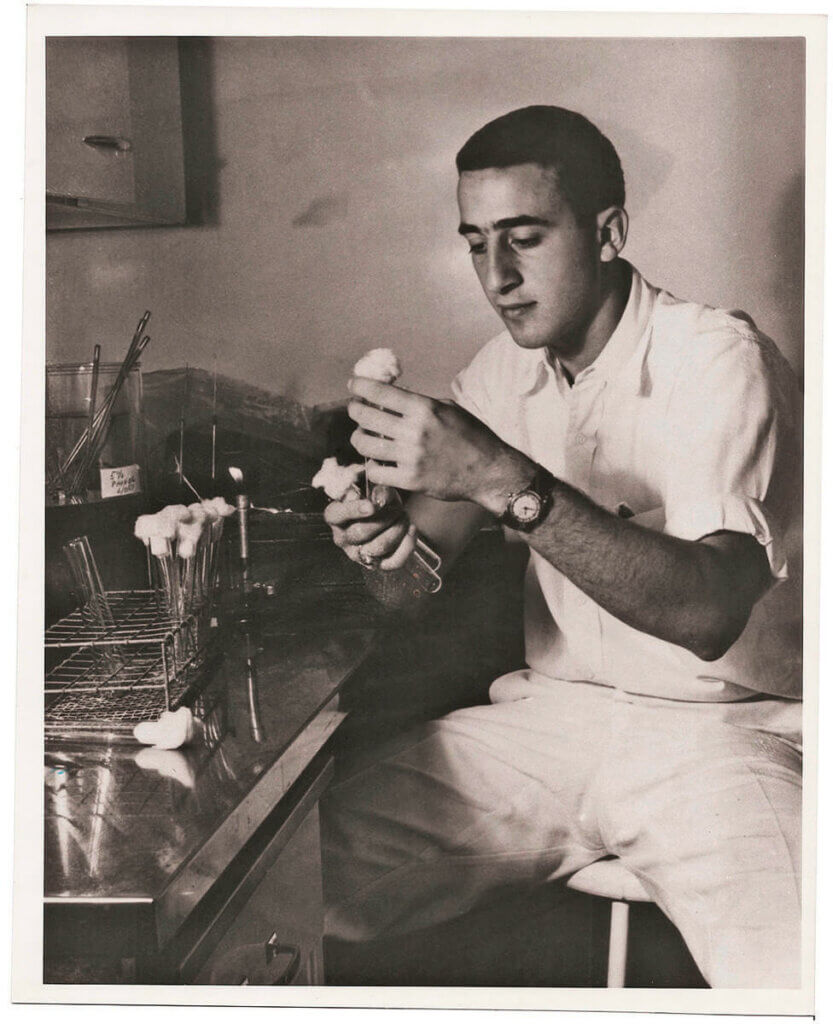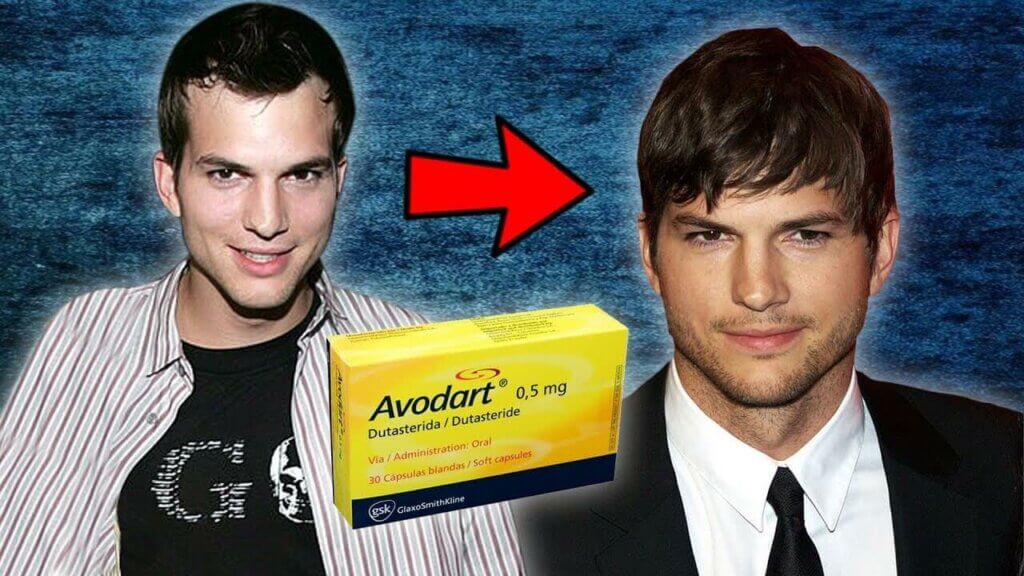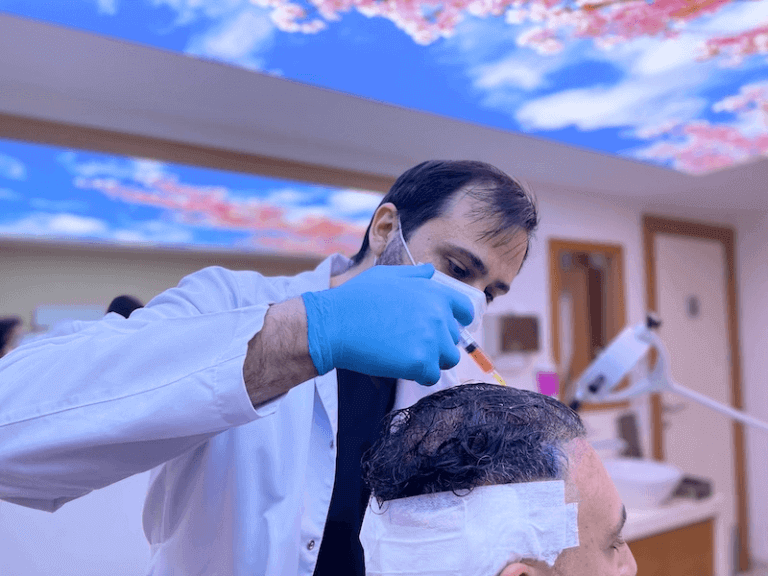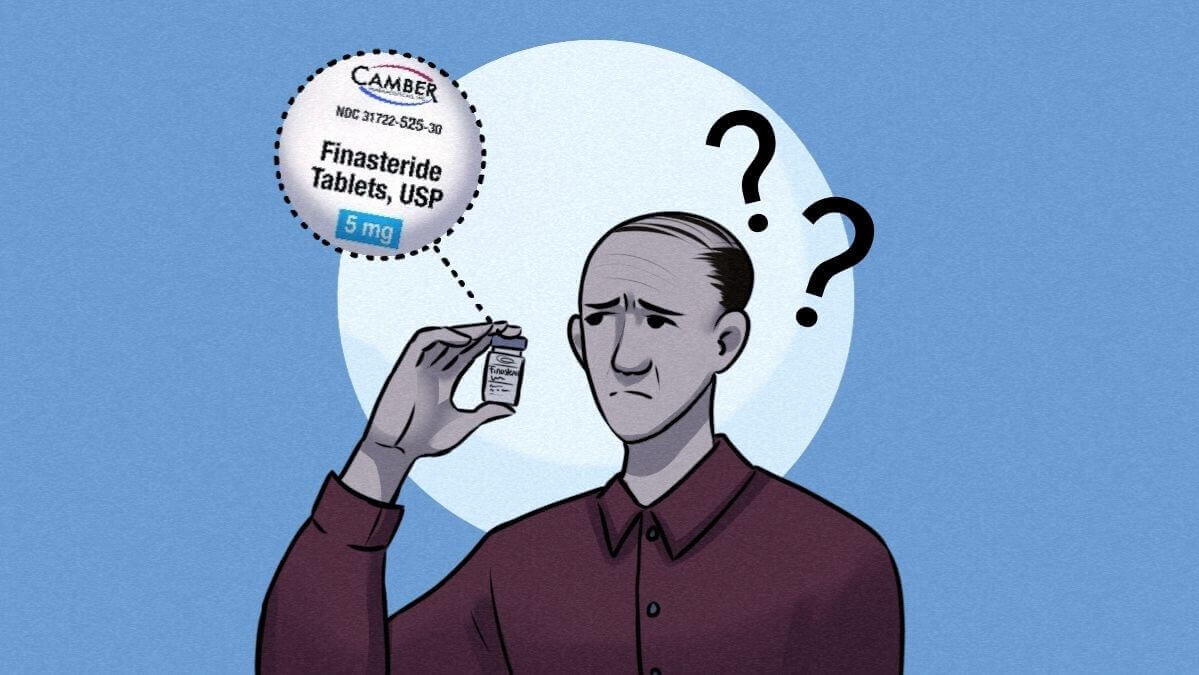TL;DR
➡ Finasteride is a medication used for stopping hair loss that works by inhibiting the production of male pattern baldness hormone dihydrotestosterone (DHT). But hair transplants are required when this hair loss comes to a point where restoration is impossible, and a new hair must be transplanted there.
➡ As hair transplants are only made on balded areas, their protection from further hair loss only includes the newly transplanted areas.
➡ The rest of your hair that did not get a hair transplant will continue suffering from the DHT without Finasteride, and eventually, those parts, too, will likely need to get a transplant.
➡ Ultimately, you have to take Finasteride with a hair transplant for better effectiveness and sustainable hair in the long term. Because the chances of needing a second hair transplant without Finasteride are much higher than any reversible side effects.
Going through a hair transplant is a significant investment to make. Your hair deserves the best, but achieving that “greatness” can be difficult.
You have to spare the time, money, the limited amount of hair follicles you still may have, and even more importantly, the confidence to go through the process. We wouldn’t want any patient to experience this mentally and economically challenging process more than once.
So, when all things are considered, the best thing you can do is ensure that another surgery won’t be necessary.
And the best solution we have for that in modern science is using the medication Finasteride.
Of course, you might still wonder whether you can get a hair transplant without using Finasteride, and technically, you could. But then some questions arise, such as:
❓ Can I prevent further hair loss in other parts of my head?
❓ Would a single hair transplant be enough?
❓ Will I be free of worrying about baldness ever again?
And for these questions, the definite answer is a solid no without the help of Finasteride. After all, hair transplantation doesn’t begin or end with surgery alone, and clinics and experts always recommend supporting medication for better results.
I can hear you asking: “What exactly are those medications, and why should I even use Finasteride, to begin with?”
No need to worry. Because in this blog, I’ll delve into these questions, as well as explain the effectiveness and potential side effects of Finasteride:
Table of Contents
- What Medications Do You Need After a Hair Transplant?
- What Is Propecia Finasteride?
- Finasteride Side Effects
- Why Should You Take Finasteride After a Hair Transplant?
- Can DHT Affect Transplanted Hair?
- How No Finasteride Can Affect Hair Transplant
- Holistic Approach to Hair Transplants
- Frequently Asked Questions (FAQs)
So, let’s start by understanding the supporting medications:
What Medications Do You Need After a Hair Transplant?
For most hair transplant procedures, there are four commonly used medications you need to know, which are:
Painkillers
Painkillers are an irreplaceable part of hair transplantation, as you will experience pain for up to 3 days after the surgery. And if the pain lasts longer, you should advise your dermatologist. Although some hair transplant options can be less painful, it is always best to follow your doctor’s advice on using a painkiller.
Antibiotics
Antibiotics appear in various parts of the hair transplant journey. Usually, it comes as a cream to cover up the donor area, and in other instances, it appears as a prescribed drug for pre-surgery and post-surgery processes. It is because antibiotics are vital in preventing infections and saving hair grafts.
Minoxidil
Usually appearing under the brand Rogaine, Minoxidil is a popular medication used to fight male pattern baldness for decades. And as a topical medication with high credibility and easy access, Minoxidil is one of the two popular FDA-approved medications for battling hair loss.
And the other one? You’ve guessed it, Finasteride.
What Is Propecia Finasteride?
Finasteride is an FDA-approved hair-loss medication usually appearing under the brand name Propecia. Its scientific history contains many studies proving its power to slow down and perhaps even stop hair loss. Finasteride does this by affecting DHT. Dihydrotestosterone (DHT) is the primary hormone in the body that causes the male baldness pattern to emerge. As a result, Finasteride works by reducing the production of DHT in the prostate and the scalp to fight hair loss.
Even when you look at the history of Finasteride, we can see that this drug’s entire existence and advantage revolves around this hormone. In 1942, it was discovered by James B. Hamilton that male hormone stimulation is directly connected to male pattern baldness, and thus reducing it would slow down hair loss.
After observing children with a deficiency in DHT at an early age, he discovered that they lacked any signs of male pattern baldness.
But Finasteride, as a drug that serves this purpose, did not exist until 1975, when Dr. Roy Vagelos and the pharmaceutical company Merck started the development of the drug that we know of today. Finally, in 1997, the 1 mg Finasteride was approved by the FDA to treat male pattern hair loss.

Today, it is one of the most suggested drugs by experts for reducing hair loss and supporting hair transplantation. But perhaps the most exciting fact is that the drug first came out as a medication for battling prostate-related illnesses.
Finasteride is also still being used for this reason today, battling ”benign prostatic hyperplasia (BPH),” also known as “enlarged prostate.” These “other” uses are precisely why many patients are worried about Finasteride’s side effects.
Finasteride Side Effects
I get your concerns about the side effects of Finasteride, especially when its original use is considered. It is a drug originating from research that focuses on sexual illnesses in men. So, this connection to affecting sexual activity concerns you.
After all, you’re getting a hair transplant to return to your natural, good-looking self of the good old days in total confidence. And now the idea of side effects, especially the sexual ones, seems to ruin this picture. Let’s look at them so we can clear them out.
Here are some of the commonly listed and most feared side effects of Finasteride:
- Skin conditions
- Skin reactions
- Scalp conditions
- Sexual side effects
Although the list seems pretty large at first glance, I have come to tell you that the pretty picture is still safe. 🩺
Let’s address some objections upfront. The concern towards this medication derives from the fact that this is an oral drug instead of an injection you just take to your scalp, which can be frightening.
That is why most people consider options such as stem cell hair transplant as the alternative because they believe they can avoid side effects such as skin conditions, reactions, or scalp conditions. But these heavily depend on whether you have an existing skin disease or condition that can trigger when mixed with Finasteride.
In other words, unless you already have a skin disease, Finasteride will NOT directly create these side effects. Besides, scientific data shows that even in the case of a disease, the chances of a side effect are rare and utterly reversible if you were to stop using Finasteride simply.
To sum it up, the situation comes in with two fail-safe options:
💡 After learning about your existing skin conditions in a detailed talk, your doctor will not prescribe you Finasteride. So, it is best to inform your doctor about your medical history.
💡 Your doctor will inform you that you are free to stop using Finasteride if any side effects appear, as you’re entirely beneficial to do so because all the side effects fade away when you stop using it. So, you will not have any permanent skin changes on your scalp or elsewhere.
How about in bed?
Now for the more appearing concern, sexual side effects. Many questions arise on this topic, such as:
➡️ “Does it affect my sexual activity?”
➡️ “Does it reduce my sperm number?”
➡️ “Does it weaken my sperms?”
➡️ “Will it make infertile?”
➡️ “Will it make me impotent?”
And many other libido-related concerns.
I will make this very clear; it has been proven in various research that Finasteride does not affect the sperm number, structure, or mobility in healthy young men.
💊 Still, I won’t go on without presenting you with some potential side effects, why they might appear, and how rare they are.
Although they are rare, the most possibly common sexual side effects are:
- Decreased sex drive
- Ejaculation disorder
- Erectile dysfunction
- Rash
- Reduction in sperm number
These side effects can be frightening, but we should check why they occur before deciding.
As with other non-sexual side-effects of Finasteride, there is an additional illness triggering these effects in many cases. In this case, a doctor’s thorough examination will identify this trigger and tell you to stop using Finasteride. Then once again, the effects will vanish. And your sexual motivation, as well as your sperm numbers, will be reversed to normal within a few weeks.
There is also the possibility of experiencing these side effects because of the nocebo effect.
“What is the nocebo effect?”
The Nocebo effect is, in many ways, the opposite of the more popular placebo effect. When a patient hears about the potential side effects of treatment and stresses over them or even believes that these side effects will occur, they’re more likely to experience them.
In other words, research shows that patients who are informed about potential sexual side effects and worry heavily about them are more likely to experience them.
Consequently, these side effects, aside from only appearing in 0.7% of the patients, are mostly connected to an external factor and, regardless of origin, are completely reversible.
In all the scenarios, you should consult your doctor, consider all the factors, and then decide. Speaking of which, let’s talk about some positive elements:
Why Should You Take Finasteride After a Hair Transplant?

So, now you know that using Finasteride is relatively safe for your health. But let’s talk about why it is necessary.
Spoiler Alert: Because it helps your hair transplantation A LOT.
Your doctor will undoubtedly suggest Finasteride as necessary too, and this is because of the same reason that many famous actors of today also use it. Finasteride is one of the strongest tools we have for fighting hair loss in the modern day.
The different benefits in different cases of its effects are extensive:
✅ It helps younger patients who are at the beginning of a recession or are balding fast at an early age because Finasteride helps stabilize the recession and helps prevent further hair loss after the surgery. After all, hair transplant surgery alone does not guarantee that you will avoid any other hair loss on other parts of your head. But Finasteride does.
✅ It helps older patients whose donor areas are insufficient because Finasteride increases the thickness and intensity of hair in the donor area, positively affecting the hair transplant.
✅ It increases your hair density and gives you better hair grace in small doses.
✅ Lastly, particularly in patients with HN-4 (Hamilton-Norwood) Scale balding, Finasteride is a must, as their balding is too wide or fast.
In conclusion, for any patient wishing to get the maximum benefit from a hair transplant, Finasteride is a big plus. Otherwise, it is almost certain that you will get another transplant after the first one because depriving your hair of Finasteride and its protective benefits is not a safe option for newly transplanted hair.
However, helping that transplanted hair by feeding it Finasteride is quite safe:
Can DHT Affect Transplanted Hair?
🔔 Since the hair is harvested from a “safe donor area” that is significantly resistant to the effects of DHT, they’re not affected by it. These areas are practically immune to male pattern baldness and will stay in your recipient area for long years.
🔔 But, this does not mean there are no other factors for hair loss. Because patient-related factors, diet, lifestyle, and not using supplements are also as influential as DHT for continuing hair loss. These factors directly affect whether your hair transplant will be permanent.
🔔 In conclusion, having a safe donor area does not protect the rest of your hair, which means that although your hair transplant can go well, the other part of your scalp can lose hair instead. That is the result when a patient goes through a hair transplant without any medical supplements, such as Finasteride:
How No Finasteride Can Affect Hair Transplant

When talking to my patients about this topic, I always share this story:
My grandfather had heart surgery a few years ago because his veins were almost completely shut off due to his high cholesterol.
Guess what he did the moment he came back home after the surgery…
Cook a buttery omelet. 🤦♂️
In short, don’t be my grandpa.
Stopping after a hair transplant or not using Finasteride is NOT a good idea. Because you will likely lose your existing hair, the newly transplanted hair will give less benefit, and its durability will be weak. And with even more combined reasons (that usually Finasteride would cover), this will result in another surgery.
Sure, it is possible to achieve a particular result, especially if you’re okay with having multiple surgeries that just aim to fill in the mistakes or the gaps of the previous ones. But the results will never be as great.
Why settle for a “decent” when you can achieve “great”?
Holistic Approach to Hair Transplants

At UnitedCare, we recommend every patient to use Finasteride before going through a hair transplant to ensure the benefits of the drug start to kick in and slow down the effects of DHT. And after the surgery, we recommend you continue using Finasteride to ensure that your existing hair stays healthy alongside your newly transplanted ones.
That way, we ensure that you start living your life without ever worrying about balding again.
We know that it is a complicated process to research a drug from scratch and decide on using it or not. Besides, continuing a prescription after the surgery without your doctor’s supervision is unsafe. So, we believe that it is crucial to help our patients before and after the surgery is already done:
1️⃣ Our approach begins with consulting you on every question you have so that we can give you the best solution you want without hesitation.
2️⃣ Then, we will begin using medications such as Finasteride and doing hair massage, herbal therapy, and exercise to reduce your hair loss to a minimum before the surgery.
3️⃣ Lastly, even after surgery, we will stay beside you for further communication on what to do. We recommend that Finasteride should appear after the surgery as well. As research indicates, using oral Finasteride until at least a year after the surgery will significantly improve the result of your hair restoration process.
In short, our approach ensures one thing. We will stay with you ‘till the end of the line.
Ready to begin the journey? Click here to start the first step:
Maximize the success rate of your hair transplantation with Finasteride.
Restore your natural look with UnitedCare‘s expert Dermatologists:
Frequently Asked Questions (FAQs)
How necessary is Finasteride after a hair transplant?
Very necessary if you wish your new hair to be permanent or do not wish your hair from different sides of your head to fall. Hair transplantation can ensure an ongoing balding area to be replaced, but it doesn’t guarantee further hair loss from other parts of your head. The best guarantee is Finasteride, and therefore it is a must.
Is there an alternative to Finasteride?
Practically, no. Some alternatives such as Minoxidil, PRP, or Mesotherapy do exist, but they do not grant the full benefits of Finasteride alone. They are often required to be mixed with other medications, which is more costly and complicated. Besides, these somewhat “alternatives” are usually supported with Finasteride for better results. So, there is no definite equivalent to it.
What happens if you don’t take Finasteride?
Preserving your existing natural hair probably will not be possible. The idea of using Finasteride continuously for a long time instead of only once can be frightening. But you have to consider losing your hair or getting another hair transplant as these are actual and possible outcomes.
Is hair transplant better than Finasteride?
Although their effects focus on different parts, we can make a comparison through their success rate. According to a study, the number of patients who showed progress in hair growth through Finasteride is significantly higher than those who underwent a successful hair transplant surgery.

